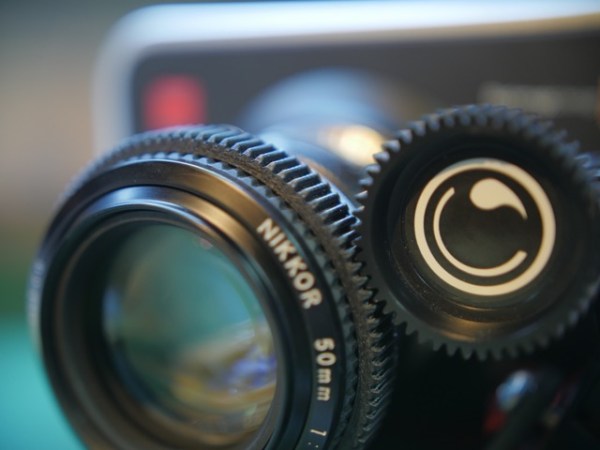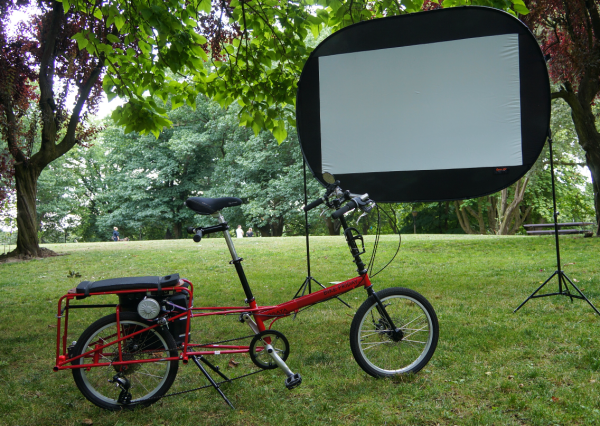Good news this week from Mars, where Ingenuity finally managed to check in with its controllers after a long silence. The plucky helicopter went silent just after nailing the landing on its 52nd flight back on April 26, and hasn’t been heard from since. Mission planners speculated that Ingenuity, which needs to link to the Perseverance rover to transmit its data, landed in a place where terrain features were blocking line-of-sight between the two. So they weren’t overly concerned about the blackout, but still, one likes to keep in touch with such an irreplaceable asset. The silence was broken last week when Perseverance finally made it to higher ground, allowing the helicopter to link up and dump the data from the last flight. The goal going forward is to keep Ingenuity moving ahead of the rover, acting as a scout for interesting places to explore, which makes it possible that we’ll see more comms blackouts. Ingenuity may be more than ten-fold over the number of flights that were planned, but that doesn’t mean it’s ready for retirement quite yet.
cinema7 Articles
Movie Magic Hack Chat
Join us on Wednesday, January 20th at noon Pacific for the Movie Magic Hack Chat with Alan McFarland!
If they were magically transported ahead in time, the moviegoers of the past would likely not know what to make of our modern CGI-driven epics, with physically impossible feats performed in landscapes that never existed. But for as computationally complex as movies have become, it’s the rare film that doesn’t still need at least some old-school movie magic, like hand props, physical models, and other practical effects.
To make their vision come to life, especially in science fiction films, filmmakers turn to artists who specialize in practical effects. We’ve all seen their work, which in many cases involves turning ordinary household objects into yet-to-be-invented technology, or creating scale models of spaceships and alien landscapes. But to really sell these effects, adding a dash of electronics can really make the difference.
Enter Alan McFarland, an electronics designer and engineer for the film industry. With a background in cinematography, electronics, and embedded systems, he has been able to produce effects in movies we’ve all seen. He designed electroluminescent wearables for Tron: Legacy, built the lighting system for the miniature Fhloston Paradise in The Fifth Element, and worked on the Borg costumes for Star Trek: First Contact. He has tons of experience making the imaginary look real, and he’ll join us on the Hack Chat to discuss the tricks he keeps in his practical effects toolkit to make movie magic.
https://www.youtube.com/watch?v=e13S0SenmPQ
 Our Hack Chats are live community events in the Hackaday.io Hack Chat group messaging. This week we’ll be sitting down on Wednesday, January 20 at 12:00 PM Pacific time. If time zones have you tied up, we have a handy time zone converter.
Our Hack Chats are live community events in the Hackaday.io Hack Chat group messaging. This week we’ll be sitting down on Wednesday, January 20 at 12:00 PM Pacific time. If time zones have you tied up, we have a handy time zone converter.
Click that speech bubble to the right, and you’ll be taken directly to the Hack Chat group on Hackaday.io. You don’t have to wait until Wednesday; join whenever you want and you can see what the community is talking about.
Open Source Digital Cinema
Years in the making, Apertus has released 25 beta developer kits for AXIOM–their open source digital cinema camera. This isn’t your point-and-shoot digital camera. The original proof of concept from 2013 had a Zynq processor (a Zedboard), a super 35 4K image sensor, and a Nikon F-Mount.
The device today is modular with several options. For example, there is an HDMI output module, but DisplayPort, 4K HDMI, and USB 3.0 options are in development. You can see several sample videos taken with the device, below.
3D Printed Lens Gears For Pro-grade Focus Pulling
Key Grip, Gaffer, Best Boy – any of us who’ve sat through every last minute of a Marvel movie to get to the post-credits scene – mmm, schawarma! – have seen the obscure titles of folks involved in movie making. But “Focus Puller”? How hard can it be to focus a camera?
Turns out there’s a lot to the job, and in a many cases it makes sense to mechanize the task. Pro cinematic cameras have geared rings for just that reason, and now your DSLR lens can have them too with customized, 3D printed follow-focus gears.
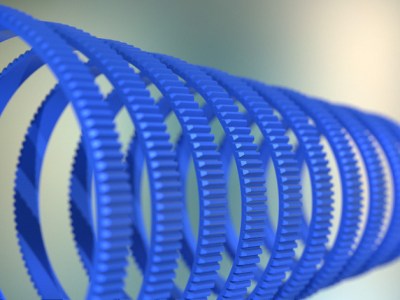 Unwilling to permanently modify his DSLR camera lens and dissatisfied with after-market lens gearing solutions, [Jaymis Loveday] learned enough OpenSCAD to generate gears from 50mm to 100mm in diameter in 0.5mm increments for a snug friction fit. Teamed up with commercially available focus pulling equipment, these lens gears should really help [Jaymis] get professional results from consumer lenses.
Unwilling to permanently modify his DSLR camera lens and dissatisfied with after-market lens gearing solutions, [Jaymis Loveday] learned enough OpenSCAD to generate gears from 50mm to 100mm in diameter in 0.5mm increments for a snug friction fit. Teamed up with commercially available focus pulling equipment, these lens gears should really help [Jaymis] get professional results from consumer lenses.
Unfortunately, [Jaymis] doesn’t include any video of the gears in action, but the demo footage shown below presumably has some shots that were enabled by his custom gears. And even if it doesn’t, there are some really cool shots in it worth watching.
And for the budding cinematographers out there without access to a 3D printer, there’s always this hardware store solution to focus pulling.
Continue reading “3D Printed Lens Gears For Pro-grade Focus Pulling”
A Pedal Powered Cinema
When the apocalypse hits and your power goes out, how are you going to keep yourself entertained? If you are lucky enough to be friends with [stopsendingmejunk], you can just hop on his pedal powered cinema and watch whatever movies you have stored on digital media.
This unit is built around an ordinary bicycle. A friction drive is used to generate the electricity via pedal power. In order to accomplish this, a custom steel stand was fabricated together in order to lift the rear wheel off the ground. A 24V 200W motor is used as the generator. [stopsendingmejunk] manufactured a custom spindle for the motor shaft. The spindle is made from a skateboard wheel. The motor is mounted in such a way that it can be lowered to rub the skateboard wheel against the bicycle wheel. This way when the rear bicycle wheel spins, it also rotates the motor. The motor can be lifted out of the way when cruising around if desired.
The power generated from the motor first runs through a regulator. This takes the variable voltage from the generator and smooths it out to a nice even power signal. This regulated power then charges two Goal Zero Sherpa 100 lithium batteries. The batteries allow for a buffer to allow the movie to continue playing while changing riders. The batteries then power the Optomo 750 projector as well as a set of speakers.
Retrotechtacular: Films Used To Be Recorded On Film
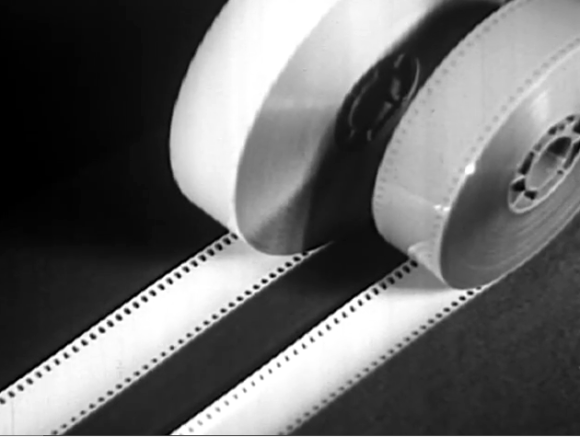
We’re sure that this title makes some readers itch because there are still a number of well-respected directors who insist on shooting with film rather than digital, but the subject of this week’s Retrotechtacular shows a portion of the movie industry that has surely been relegated to life-support in the past few decades. Photo finishing, once the stronghold of chemical processes used by all to develop their photographs, has become virtually non-existent. This is the story of how film and photo finishing drove cinema for much of its life.
The reels seen above are negative and positive film. The negative film goes in the camera and captures the images. After developing and fixing the negative film, the process is repeated. Light shines through the fixed negative in order to expose a fresh reel of film. That film is finished and fixed to create the reel which can be used in a projector. This simple process is covered near the beginning of the clip found below. The 1940 presentation moves on to discuss the in-depth chemistry techniques used in the process. But you’re really in for a treat starting about half-way through when the old manual methods are shown, which have been replaced by the “modern laboratory”. We love those huge analog dials! The video concludes by showing the true industrialization of the film developing process.
We’re running out of Retrotechtacular topics. If you know of something that might be worth a feature please send in a tip!
Continue reading “Retrotechtacular: Films Used To Be Recorded On Film”
From Cinema To Stills, Camera Lens Gets New Life
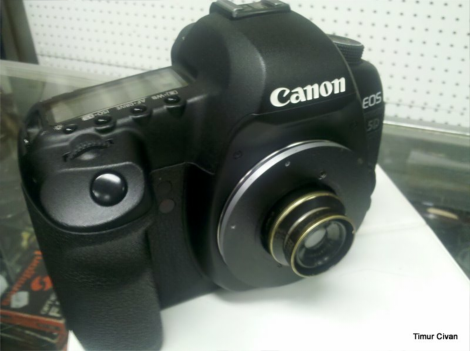
[Timur Civan], with a beautiful merge of past and present, has taken a 102 year old camera lens (a 35mm F5.0 from hand cranked cinema cameras) and attached it to his Canon EOS 5D. While this is not the first time we’ve seen someone custom make a camera lens or attach a lens to a different camera, such as when we brought you plumbing tilt shift or iPhone camera SLR or Pringles can macro photography, the merge of old tech with new warms our empty chest cavities hearts. Catch some additional shots of 1908/2010 New York City after the jump.
Continue reading “From Cinema To Stills, Camera Lens Gets New Life”




